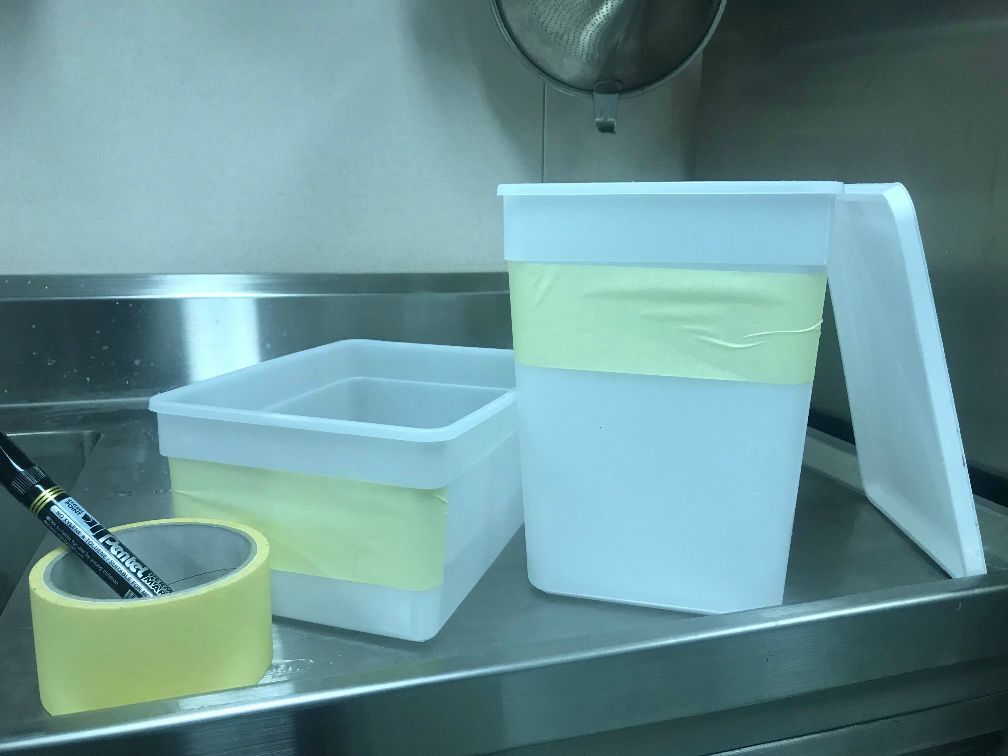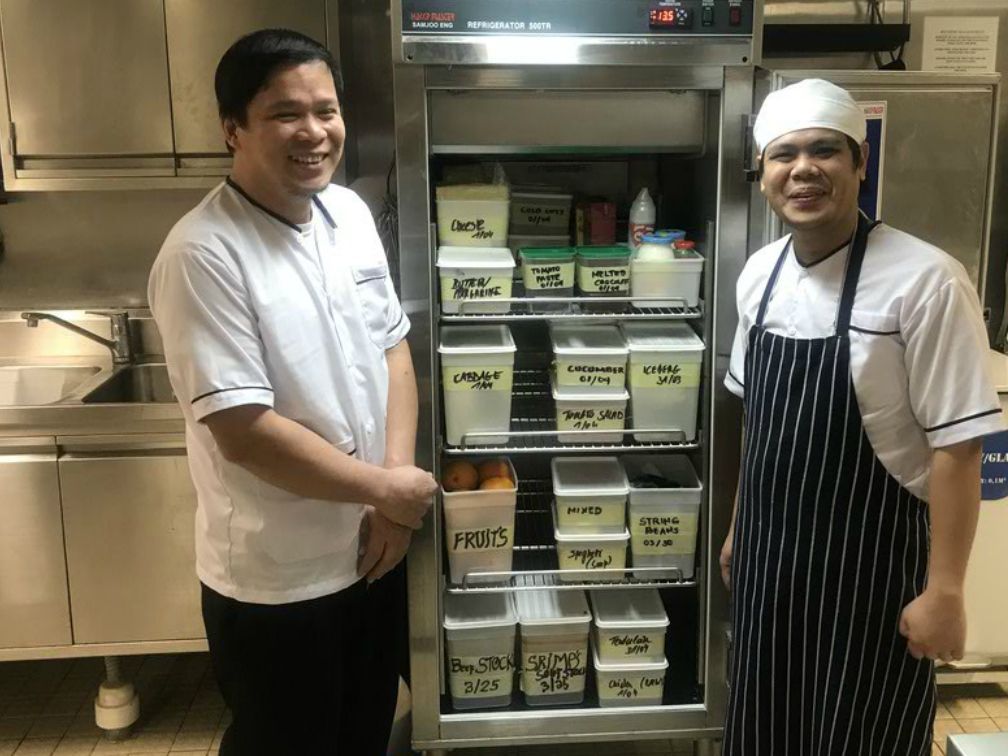MSCC Phase One
Food storage
HACCP and Food safety rules have become more and more stringent over the past few years. On most vessels, efforts are made to comply accordingly with the means provided. However, still we encounter galleys where good practices are not applied. Often this is due to lack of the right tools. The most common hazard depicted below.
This picture perfectly illustrates some examples:
This hazardous situation is unacceptable, will lead to remarks, fines and worst-case scenario, to detention of the whole vessel.
For this we offer a cost-efficient solution through the use of plastic food containers in different sizes. We have sourced a company that produces ice cream boxes in sizes 2,5 liter and 5 liter as pictured below.
These boxes are ideal because:
As the picture also shows, these boxes can easily be labeled using a sharpy and masking tape. Masking tape is low-tac, will leave no residu to the plastic and again is economically priced.
For midsize vessels and up we recommend purchase of 100 containers of 2,5 liter and 60 containers of 5 liter. For vessels with smaller crews we recommend alternatives of 50 pieces of 1 liter and 40 pieces of 2 liter.
When applied correctly, these boxes will make for a hygienic and well-organized system with lots of overview and zero risk of spillage.
Labeling
Labeling all content in the refrigerator is essential to keep track of what you have inside. Most products have a storage limit and without proper labeling you will lose track. Labeling should be done as followed:
when done right, now your refrigerator should look like this:
THESE RESULTS CAN ONLY BE ACHIEVED AND CONSISTENTLY MAINTAINED IF ALL VESSELS ARE EQUIPPED WITH THESE BOXES!
it is important to store all goods in a decent way. If we do so, we can preserve our items quite well. Here some tips and storage limits in the refrigerator:
Refrigerator storage:
This covers the most important product groups for correct storage in the refrigerators. Most of the above is common sense. However, when in doubt, contact the galley coach for further guidance.
Freezer storage
When adapting to Phase Two of the MSCC, you will soon feel the benefits of working in advance and stocking up on such things as soup, stock, basic sauces and stews in your freezers in the stores. As this is an essential element of MSCC Phase Two, it is important that we do this in the correct way:
Freezer storage is an ideal way to work in advance over a longer period of time. For sure it is not indefinite, but it has a lot of advantages, towards e.g. stormy weather, overload of visitors (e.g. dry dock operations), drills, etc. Besides this, of course it is nice to have something in store during the handover of the galley. This way, your replacement can start his tour without too much unnecessary stress. He will for sure appreciate it.
Of course, whenever you remove an item from the freezer room for consumption, some procedures need to be followed too:
Storage in the freezers also requires some common sense. Liquids expand when frozen, so don’t overfill the boxes.
NEVER PUT DEFROSTED INGREDIENTS BACK IN THE FREEZER AFTER DEFROSTING!! Only after cooking them fully may fish or meat be refrozen. Same goes for frozen vegetables. It is extremely dangerous to serve raw foods that have been frozen and defrosted more than once.







